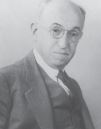Every Easter as a kid, I knew that there would be several opera creams in my Easter basket from Schneider’s sweet shop in Dayton, Kentucky, right across the river from Cincinnati. My mother grew up in a baking family, whose bakery was only a few blocks from Schneider’s sweet shop on ‘the Avenue.’ My mother gushed about these sweet confections, and her love was instilled in all of us at Easter. A Cincinnati company, the Papas Company, also made opera creams, but they just weren’t as smooth and silky as the ones made by Schneider’s. There were even more flavors like cherry and pineapple cream, marshmallow, peanut butter – a dozen in all – but the opera creams were the best.
The opera cream is a candy uniquely Cincinnati, brought here by a German confection making family before the Civil War. It’s an oblong chocolate, sometimes mistaken for the round butter cream, with a rich, filling of sweet cream, sugar and butter. What I didn’t know as a kid is that this opera cream had a legacy dating all the way back to the French Empire of the 1600’s and the extravagant Sun King, Louis XIV. The same opera creams that we loved were the same recipe that Louis XIV ate in his gilded palace, as his imperial subjects starved in the streets.
It all started back in 1668. A German chocolate confection-making family, the Bissinger’s were living in Paris. That year King Louis XIV proclaimed the family, “Confiseur Imperial” or candy makers of the Empire, because their candies were his favorite. Chocolate was extremely popular with Louis XIV and the members of his Court at Versailles. When the Spanish Princess Maria Theresa was betrothed to Louis XIV, she gave her fiancé an engagement gift of chocolate, probably Bissinger’s, packaged in an elegantly ornate chest. The Bissinger fame began to spread and the family continued to make confections for the royals and nobles of Europe. The chocolate craze which took hold in Paris conquered the rest of France, and began a reputation of its aphrodisiac properties. Art and literature was thick with erotic imagery inspired by chocolate. Casanova was reputed for using chocolate with champagne to seduce his lovers. Madame de Pompadour was advised to use chocolate with ambergris to stimulate her desire for Louis XV, but to no avail. Madame du Barry, reputed to be nymphomaniacal, encouraged her lovers to drink chocolate in order to keep up with her.
Chocolate had become so fashionable that in 1662, the pope took a look at this bewitching beverage during the Lenten fasting. The judgment: “Liquidum non frangit jejunum,” a chocolate drink did not break the fast, but eating chocolate confections didn’t pass muster, until Easter. This is perhaps where the tradition of giving Easter candies comes in.
The Bissingers continued making their chocolates for the French after the French Revolution, acting as confiseur to the Emperor Louis Napoleon Bonapart III. Legend has it that Napoleon Bonaparte I carried chocolate morsels into his military campaigns in the 19th century, eating it to conserve energy, in a sense inventing the first power bars.
The Bissingers, led by Karl Friedrich Bissinger (1829-1905), left Europe in 1845, to escape the rising turmoil and dissatisfaction with the French King, Louis Phillipe, and settled in Cincinnati, continuing to make candies here. They brought their delicious opera cream recipe. Legend has it that they supplied these opera crèam candies to the Cincinnati Opera at the Music Hall, where operagoers received them free at intermission. After Karl Sr. died, his widow Theresa became the first female owner of a chocolate company in the United States. Karl Jr. decided to spread his wings and moved to St. Louis. He opened the Bissinger’s store on McPherson in 1927, where it remained for the next 80 years until the move to Maryland Plaza in 2007
Karl Friedrich Bissinger, the Inventor of the Opera Cream
Several other companies in Cincinnati started making the opera cream, as its popularity spread throughout the area. Putnam Candies on Central Avenue took on the Bissinger recipe, which was then bought by Chris A. Papas and Sons in 1967. Papas Candies was run by a Greek family, starting in 1935 as Lilly’s Candy Shop at Madison Avenue and 9th Street in Covington. Greeks dominated the candy industry in Cincinnati and the Midwest in the first half of the 20th century. The son of the owner of Schneider’s, Bob worked at Papas candies where he learned their recipes, and then worked at and purchased Bissinger’s, where he learned the opera crème recipe. Bob took the recipe to his family’s Sweet Shop, where they continue to make this legacy recipe that survived the French Revolution.








